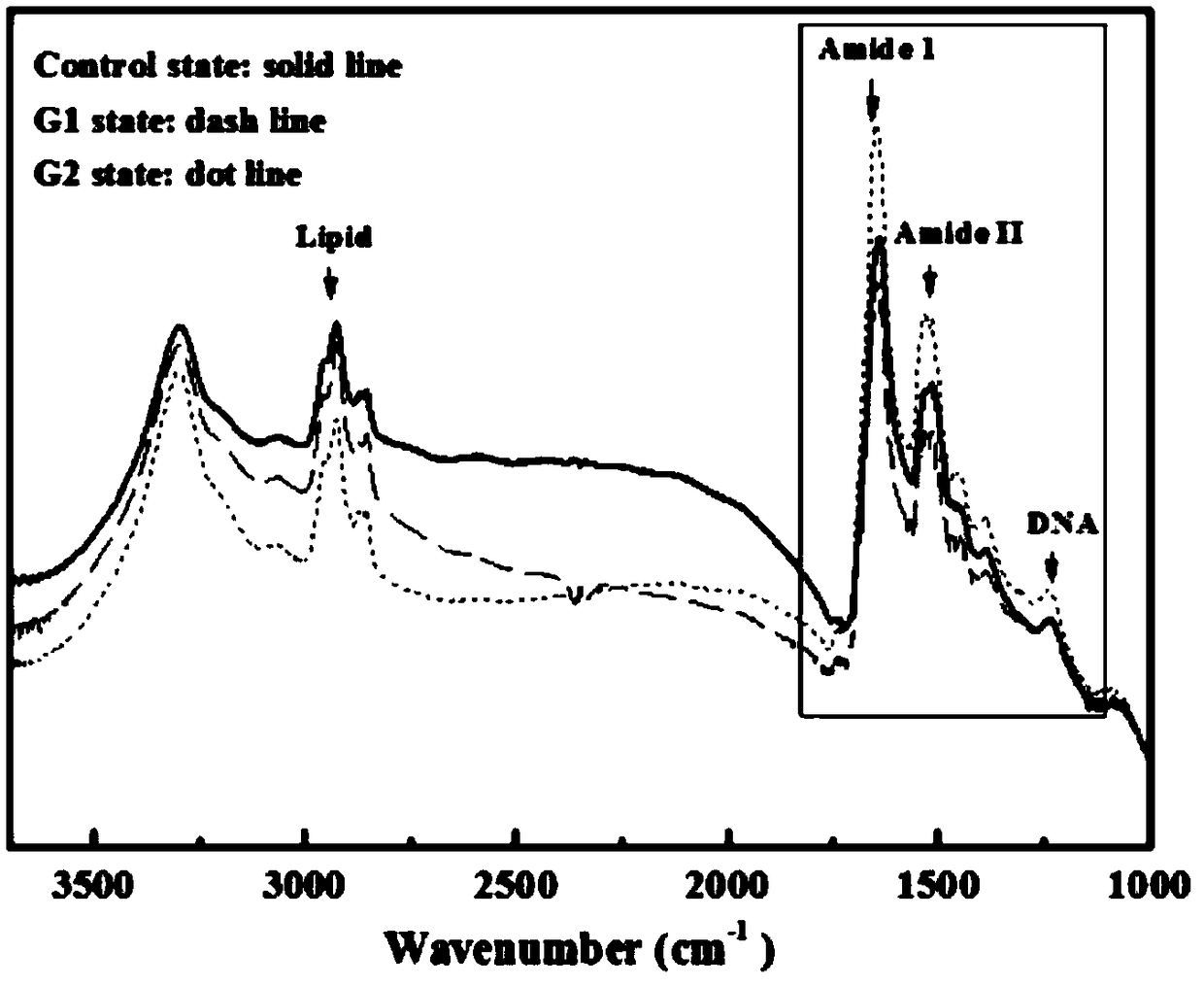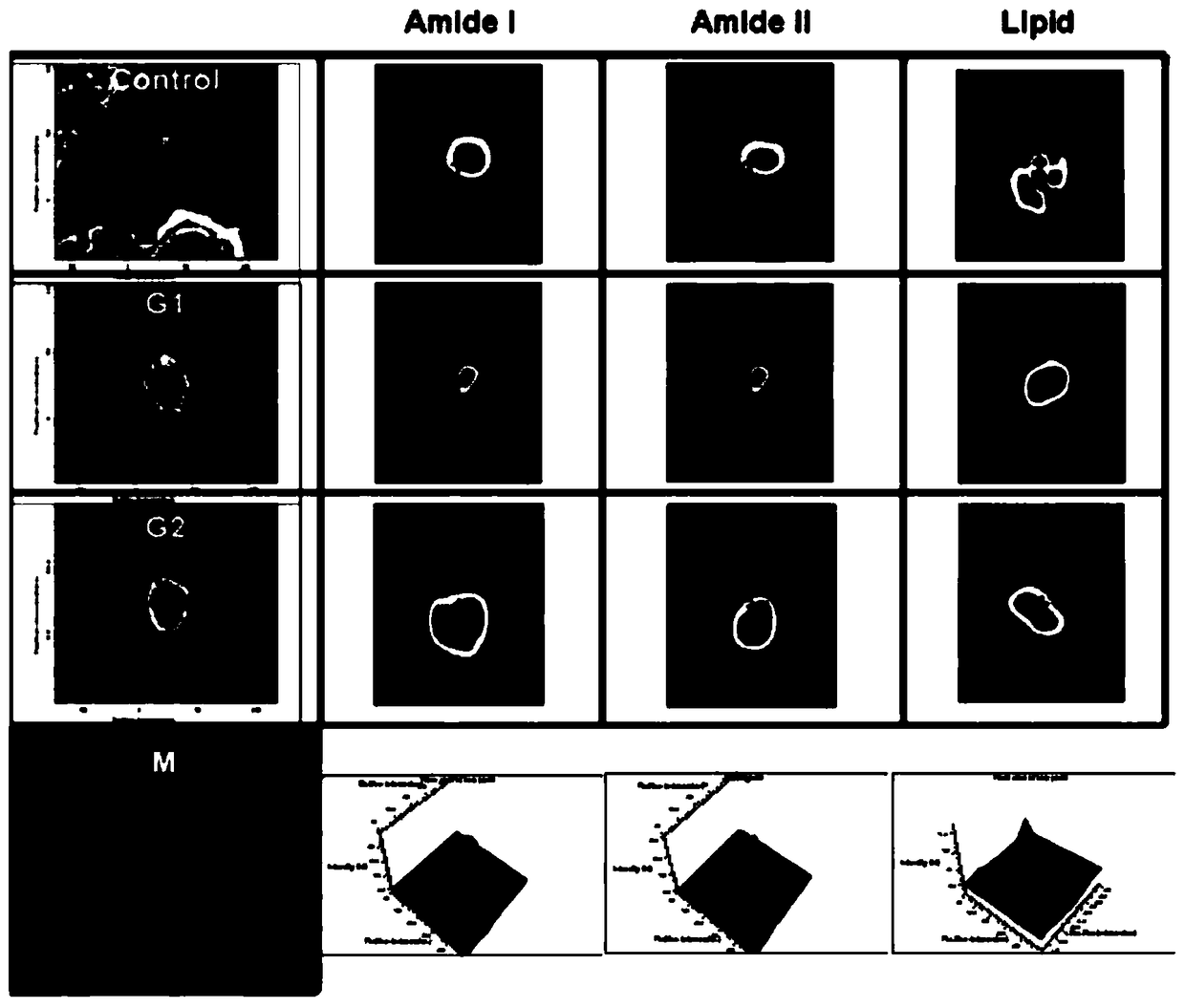Method for detecting cyclic forms of cancer cells
A cell cycle and cancer cell technology, applied in the direction of tumor/cancer cells, animal cells, vertebrate cells, etc., can solve problems such as the inability to recognize cancer cells in essence
- Summary
- Abstract
- Description
- Claims
- Application Information
AI Technical Summary
Problems solved by technology
Method used
Image
Examples
Embodiment 1
[0032] Embodiment 1, the first embodiment of the present invention provides a method for detecting the cycle morphology of cancer cells. The method for detecting the cycle morphology of cancer cells in this embodiment is based on synchrotron radiation infrared (synchrotron radiation infrared, SR-IR) microscopy Realized by spectral and SR-IR spectral imaging technology, specifically including steps S01 to S03:
[0033] Step S01, extracting four parts of the culture solution containing a certain number of cancer cells from the culture medium, and putting them in different culture bottles, adding a cell cycle blocker to three of the culture bottles and treating them for 24 hours to Make the three cancer cells stay in G1 phase, G2 phase and M phase respectively.
[0034] In a specific implementation, the medium may be RPMI-1640 (Roswell Park Memorial Institute-1640) medium containing 10% heat-inactivated fetal bovine serum and 1% penicillin-streptomycin-L-glutamine, And the mediu...
Embodiment 2
[0047] Embodiment 2, the second embodiment of the present invention provides a method for detecting the cycle morphology of cancer cells, including step S11 to step S16:
[0048] Step S11, extract four culture solutions containing a certain number of cancer cells from the culture medium, and put them in different culture flasks, respectively use 1x phosphate buffered saline with pH 7.4 to culture the four culture flasks. solution for washing and adding fresh culture medium (without cancer cells).
[0049] In specific implementation, a hemocytometer can be used to measure the number of cancer cells in the culture medium.
[0050] Wherein, the medium is RPMI-1640 medium containing 10% heat-inactivated fetal bovine serum and 1% penicillin-streptomycin-L-glutamine, and the medium is at 37°C and contains 5% CO 2 Stored in a humid atmosphere.
[0051] It should be noted that the purpose of washing the medium with 1x phosphate-buffered saline (1xPBS) pH 7.4 is to release cells fro...
PUM
 Login to View More
Login to View More Abstract
Description
Claims
Application Information
 Login to View More
Login to View More - R&D
- Intellectual Property
- Life Sciences
- Materials
- Tech Scout
- Unparalleled Data Quality
- Higher Quality Content
- 60% Fewer Hallucinations
Browse by: Latest US Patents, China's latest patents, Technical Efficacy Thesaurus, Application Domain, Technology Topic, Popular Technical Reports.
© 2025 PatSnap. All rights reserved.Legal|Privacy policy|Modern Slavery Act Transparency Statement|Sitemap|About US| Contact US: help@patsnap.com


